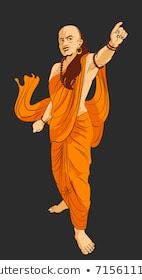Mauryan Realm was the biggest domain in the entire of the old world. It was represented by a unified type of government.
Kautalya's Arthashastra, Ashoka's engravings, and Megasthenese's records all things considered are the significant wellsprings of the data on different parts of organization, economy, society, and religion of the individuals.
Nation and Organization
The ruler was the top of the state. The lord used to give mandates known as 'Sasana.' He had the legal, the authoritative, and the leader powers.
Sasanas are accessible as 'Orders of Ashoka'.
The Mauryas ruler needed to keep the law of the nation given by law providers and needed to oversee as indicated by the traditions of the land. He was unable to do whatever he enjoyed.
The ruler was aided organization by 'Mantriparishad,' which was a Board of Clergymen.
Adhyakshas (administrator) were officials who played out an uncommon assignment.
Kautilya referenced an enormous number of Adhyakshas, for example, Adhyakshas of gold, storage facilities, trade, horticulture, ships, cows, ponies, elephants, chariots, infantry, identifications and so on
Yukta was the official accountable for the incomes of the ruler.
Rajjukas were the officials for land estimation and fixing their limits. They were likewise offered capacity to rebuff the liable and set free the honest people.
The Mauryan Domain was separated into areas. Pradeshikas was another official of the Mauryan organization. He was the common lead representative.
Bindusara designated his child Ashoka as Legislative head of the Avanti area and posted him at Ujjain.
Asoka's senior sibling Susima was posted at Taxila as the Legislative head of the northwestern territories.
The significant areas were straightforwardly under Kumaras (sovereigns); in any case, the complete number of territories isn't known.
Junagarh rock engraving of Rudradaman specifies that Saurashtra (Kathiawar) was administered by Vaisya Pushyagupta at the hour of Chandragupta Maurya and by Yavana-raia Tushaspa at the hour of Ashoka, both were the common lead representatives.
The Mauryan realm was isolated into various areas, which were partitioned into the locale and each region was additionally separated into gatherings of five to ten towns.
The town was the littlest unit of an organization.
The pradeshika was the head of locale organization. He used to visit the whole locale at regular intervals to assess the organization of territories under his influence. A gathering of authorities worked in each area under him.
Gramika was the top of the town. He was aided town organization by the "town seniors".
The towns, during this time, appreciated generous independence. The vast majority of the questions of the town were settled by Gramika with the assistance of town get together.
The Arthashastra makes reference to the most significant pay being 48,000 Panas and the least 60 Panas. There was a wide scope of scales in compensation.
City Organization
The Arthashashtra has a full part on the organization of urban communities.
The Orders of Ashoka likewise portray name of the urban communities, for example, Pataliputra, Taxila, Ujjain, Tosali, Suvarnagiri, Samapa, Isila, and Kausambi.
Megasthenese had depicted the organization of Pataliputra in detail.
Megasthenese depicted that Pataliputra city was controlled by a city gathering including 30 individuals. These 30 individuals were partitioned into a leading body of 5 individuals each.
Every one of the 5 part sheets had explicit duties towards the organization of the city. For instance −
One such board was worried about the mechanical and creative produce. Its obligations included fixing of wages, check the defilement and so on
The subsequent board managed the undertakings of the guests, particularly outsiders who came to Pataliputra.
The third board was worried about the enrollment of birth and demise.
The fourth board directed exchange and trade, kept a vigil on the fabricated products and deals of wares.
The fifth board was liable for the oversight of assembling of merchandise.
The 6th board gathered assessments according to the estimation of sold products.
The assessment was regularly one-10th of the sold products.
Officials were selected by the 'City board' and responsible for the public government assistance, for example, upkeep and fixes of streets, markets, medical clinics, sanctuaries, instructive foundations, disinfection, water supplies, harbors, and so forth
Nagaraka was the official accountable for the city.
There were various divisions that managed and controlled the exercises of the state.
Kautilya makes reference to a few significant offices, for example, accounts, income, mines and minerals, chariots, customs, and tax assessment.






0 Comments